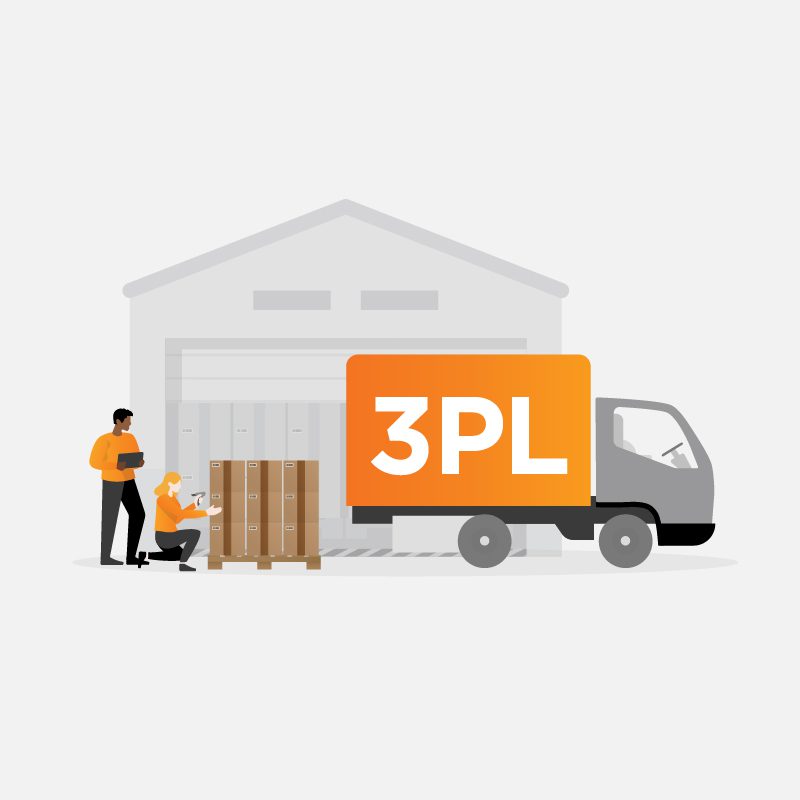Direct-to-Consumer (DTC) isn’t new. What is? The insanely high cost of DTC for 3PL logistics leaders looking to wow their clients. Let’s look at how you can take the burden off your customers and become a DTC 3PL growth leader.
DTC, or consumer-direct fulfillment, is a vital growth strategy that can get your 3PL company either rehired or fired. There’s a fine line. Firms that are stuck in the past are quickly finding themselves unable to keep up with client expectations.
Let’s look at why demand is increasing for 3PLs that can support a DTC model effectively. Plus, what are the top 3PL fulfillment capabilities you’ll need to convert that demand into growth without sacrificing your margins or making your clients foot the bill?
DTC sales are surging
On one hand, mastering DTC fulfillment is a surefire way to win clients who are laser-focused on runaway demand in their direct channels. DTC is low-hanging fruit, and therefore, it has become one of the top priorities for 82% of senior supply chain decision-makers surveyed in a new DTC report.
- More than two-thirds say their investment in DTC increased over the past 3 years
- Nearly one-quarter (22%) saw DTC sales increase by more than 50% in the past 12 months
- 44% said more than half of their sales come from DTC channels today; 58% predict this will be the case within the next 3 years
Grab the new North American DTC Market report and watch our webinar on-demand to get expert analysis of its findings.
Top DTC brands want a top 3PL
Increasing demand for DTC means increasing demand for 3PL services that help clients meet their growth goals. You’ve got the opportunity in your palm; do you have the fulfillment capabilities to capture it? Or, are you just finding creative ways to pass along rising logistics costs to your customers?
Markups can be tempting. In the fiercely competitive third-party logistics space, this strategy is reckless.
A scalable 3PL WMS (warehouse management system) can easily offset logistics costs for your 3PL and your clients, creating tangible value instead of shifting financial pain.
Implement in 90 days or less 150+ pre-built integrations. 99%+ order accuracy. Meet Deposco’s software for 3PL companies.

These systems automate a myriad of manual tasks in getting better-quality products and services direct to consumers. They provide a fast and accurate view of deliveries and establish a scalable tech stack that evolves easily with consumers’ expectations.
DTC, 3PLs, and The Zero Consumer
There’s a great deal of transparency in a Direct-to-Consumer model, especially around pricing, order tracking, and sustainability. Consumers are digitally savvy. This has led to a new customer persona: The Zero Consumer.
A term coined by McKinsey, Zero Consumers are “omnichannel shoppers who scrimp and splurge at the same time. They’re not loyal to brands, and they care about health and sustainability (even though they aren’t always willing to pay for it). They are a global phenomenon—and companies that don’t pay close attention to them could soon become irrelevant.”
For that reason, ‘building strong relationships directly with customers’ is the number-one reason your clients are prioritizing DTC (49% of the survey respondents). Zero Consumers don’t have loyalty to any one brand.
“There is not necessarily a slowdown in what people are buying, but they are being more selective,” says Josh Lett, SVP of Professional Services, Deposco. “They’re looking for higher quality and a better experience. We’re also witnessing a greater focus on social responsibility.”
DTC has created a new role for 3PL
You must now create operational excellence and opportunities for your client to get to know their customers as they look to reduce churn.
For example, a client may want to know what you do to support personalized offers, product uniqueness, custom packaging, and white-glove services. Or, they may want to know how your operations support the consumer’s increasing appetite for sustainable logistics and packaging. You’ve gotta have technology that can support that.
You can – and should – get creative with these value adds, but you must read market signals and ensure that new DTC 3PL services make your business BETTER for them (and for your bottom line). Otherwise, you can kiss that new contract or renewal goodbye.
So how do you pull off these value-adds without markups?
Modern WMS + OMS software simplifies DTC
Delivering better-quality products faster at a lower cost requires assessing your fulfillment systems. Are you trying to jump through hoops with an ERP or legacy WMS that was developed on a single replenishment path before anyone even knew the term “DTC”?
Are your teams spending too much time doing manual tasks like 3PL billing, order tracking, and special IT requests that your teams simply can’t take on right now?
Modern WMS and order management systems unlock the answer:
- 77% of respondents say investment in these technologies would drive more DTC sales
- 69% say a WMS or OMS solution would make their DTC channels more profitable
If you, the 3PL, are experiencing these pain points, so are every single one of your clients. It’s draining their limited resources, distracting them from being the innovative brands that they want to be. They need help to get back to focused, profitable growth.
Why not take that step for them?
Modern 3PL solutions position your business to offer high-value services – including economies of scale, automation, customer insights, personalization, support for sustainable last-mile options, and custom services – while bringing ultimate cost control.
- 3PL automation: DTC requires unique picking, packing, and shipping processes that happen much faster than your traditional B2B workflows can handle. Tapping into intelligent 3PL automation solutions, like material handling equipment (MHE) – along with automating the physical aspects of fulfillment – allows your 3PL to run your operations faster and smoother without increasing headcount.
- Customer insights: Real-time data integrations between your 3PL systems and the client’s core systems are essential to modern ecommerce fulfillment. Update the product master, receive orders from their marketplaces, track POs for incoming restock from OEMs, etc. The accumulation of that data fuels powerful forecasting tools to better make restock order cadence, size, and content recommendations, reinforcing your value as their servicer.
- Personalization: No modern brand makes an impact as a one-size-fits-all provider. You can’t either. Each of your clients – existing and prospective – has different needs and demands. Your fulfillment system should be able to personalize invoices and consider different policies on Activity-Based billing – picks, packs, time, and materials. All of that should be automated, ensuring consistency in delivery.
- Reporting and support for sustainable delivery: What gets measured gets managed. It’s too late to fix problems if you’ve already taken the hit. You can only hope to do better next time. It’s better to be able to see your business in real time and share that with your clients. Identify high-labor tasks, track material usage, and manage your labor force – then attribute those to individual accounts. The more efficient you are, the more valuable you are as a 3PL logistics partner to your clients.
- Custom services: Is one client pure B2B? Offer them pallet servicing and integrated EDI to relay statuses back to their other systems. Is one client DTC Parcel? Consider their invoice, packaging, handling, and marketing insert needs. Manage both in the same warehouse. Clients come in all shapes and sizes. Having a 3PL WMS that considers each client like a unique business unit helps you win and keep that volume in the same facility. Even more, offering these services proactively increases their investment and trust in you.
How do you know if you’re ready for supply chain automation? How will it make you better? Learn what to assess, the types, and where to start.

All of this means no passing along costs to your clients and no absorbing them in your own business. Successful 3PLs are more than service providers. They are partners in growing their client’s business. Everyone reaps the rewards.
How effective is your DTC 3PL strategy?
Are you a 3PL serving the DTC market in a way that keeps them coming back for more? How can you control the execution spend and enable new routes to market for your clients? Do you have what it takes to master the complexities of direct-to-consumer for your clients?
Meet Deposco, the industry’s best integrated OMS and WMS for high-growth third-party logistics firms.

